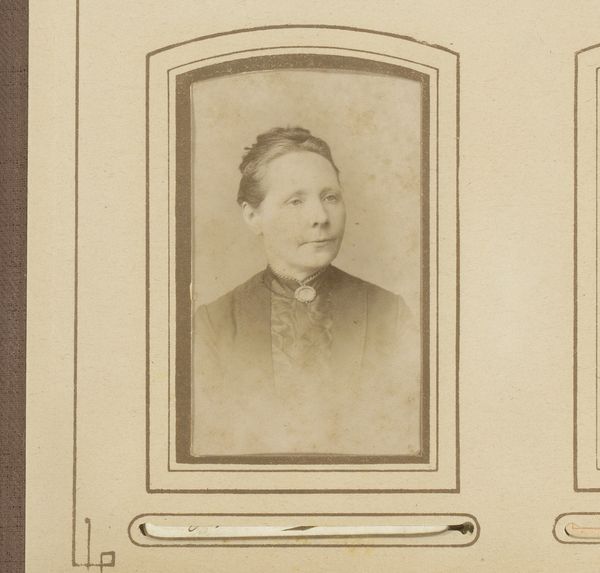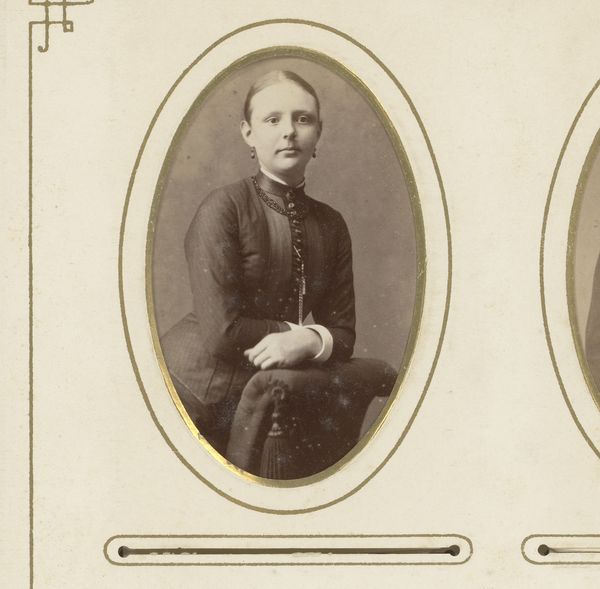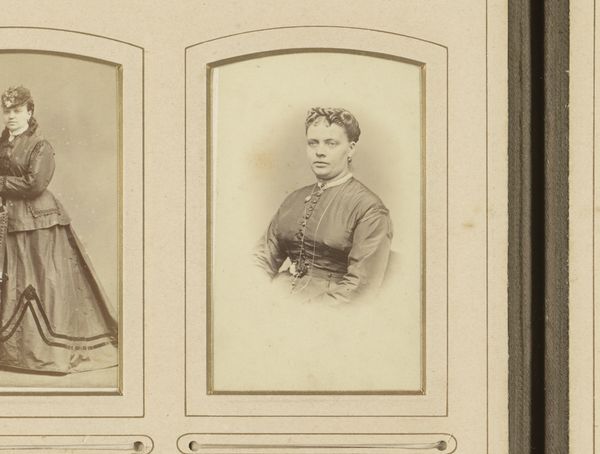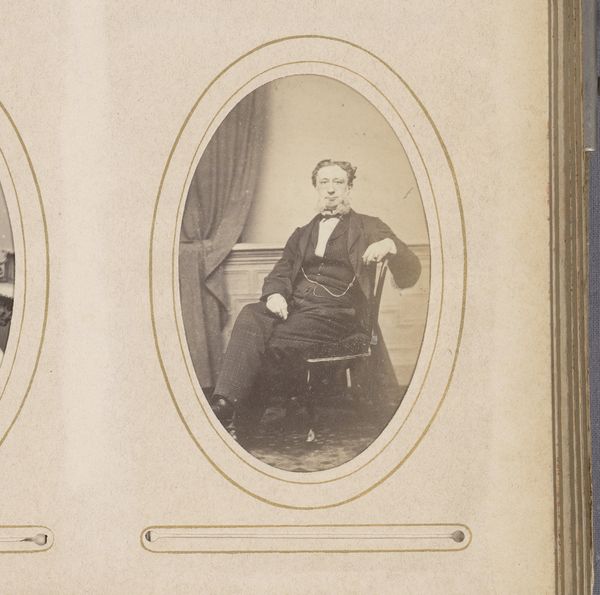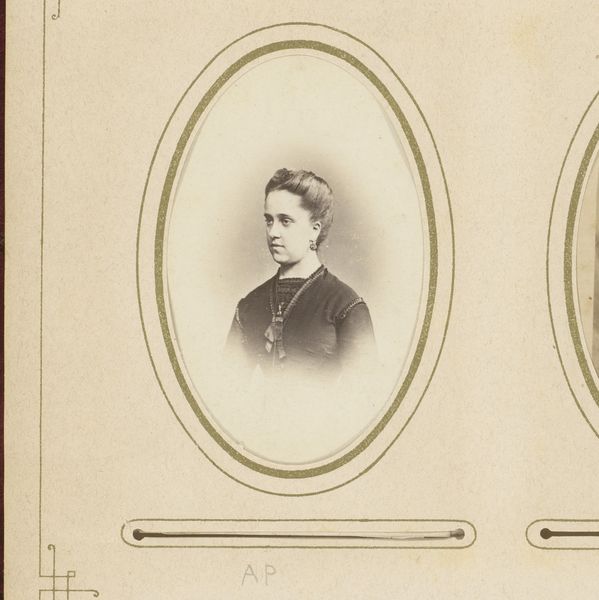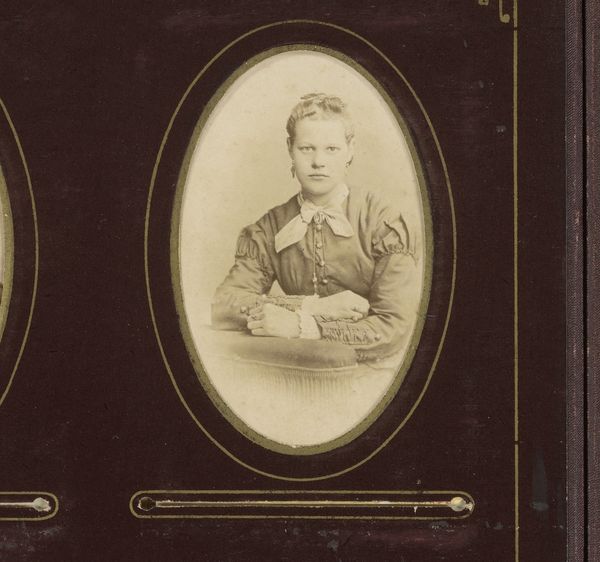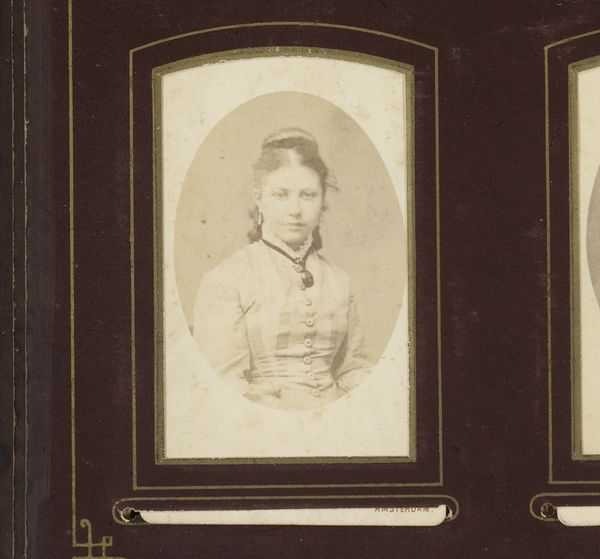
photography
#
portrait
#
aged paper
#
toned paper
#
earth tone
#
light earthy tone
#
photography
#
brown and beige
#
earthy tone
#
warm-toned
#
neutral brown palette
#
brown colour palette
#
watercolor
Dimensions: height 80 mm, width 50 mm
Copyright: Rijks Museum: Open Domain
Editor: Here we have "Portret van een vrouw," a photograph by Willem Gerhardus Kuijer, created sometime between 1867 and 1880. It's currently housed in the Rijksmuseum. The tones give it a sense of warmth. What compositional elements stand out to you? Curator: The composition is remarkably conventional for a portrait of this period. Note how the artist meticulously positions the subject in a balanced, symmetrical manner. The gaze directed at the viewer establishes a formal relationship, yet the soft tonal gradations—the umber shadows playing against the pale highlights—mitigate any potential starkness. Editor: So you see the controlled symmetry as a key element? Curator: Indeed. The placement of the sitter and even the minimal props seem deliberately arranged to create a harmonious visual experience. Consider also the materiality; photography in its nascent stages allowed for capturing detail, however the soft focus and warm tones create an atmospheric effect. Are you finding this consistent with other portraiture of this era that you’ve examined? Editor: Well, yes, to a degree, but many seemed to embrace the stark clarity offered by the medium more readily. Here, there's almost a painterly softness. It bridges the gap. Curator: Precisely. The formal properties transcend mere representation; they aspire to evoke a certain… ambiance, shall we say. It almost argues that photography can operate within the same realm as traditional painting regarding aesthetic aims. It is striving for an elegance within the boundaries of technical limitations of the time. Editor: It’s fascinating to consider it in relation to both its own medium and painting. I’ll definitely be looking at other photographic portraits with a new eye now. Thanks! Curator: The nuances of composition and material—they are, I believe, gateways to richer interpretations.
Comments
No comments
Be the first to comment and join the conversation on the ultimate creative platform.
